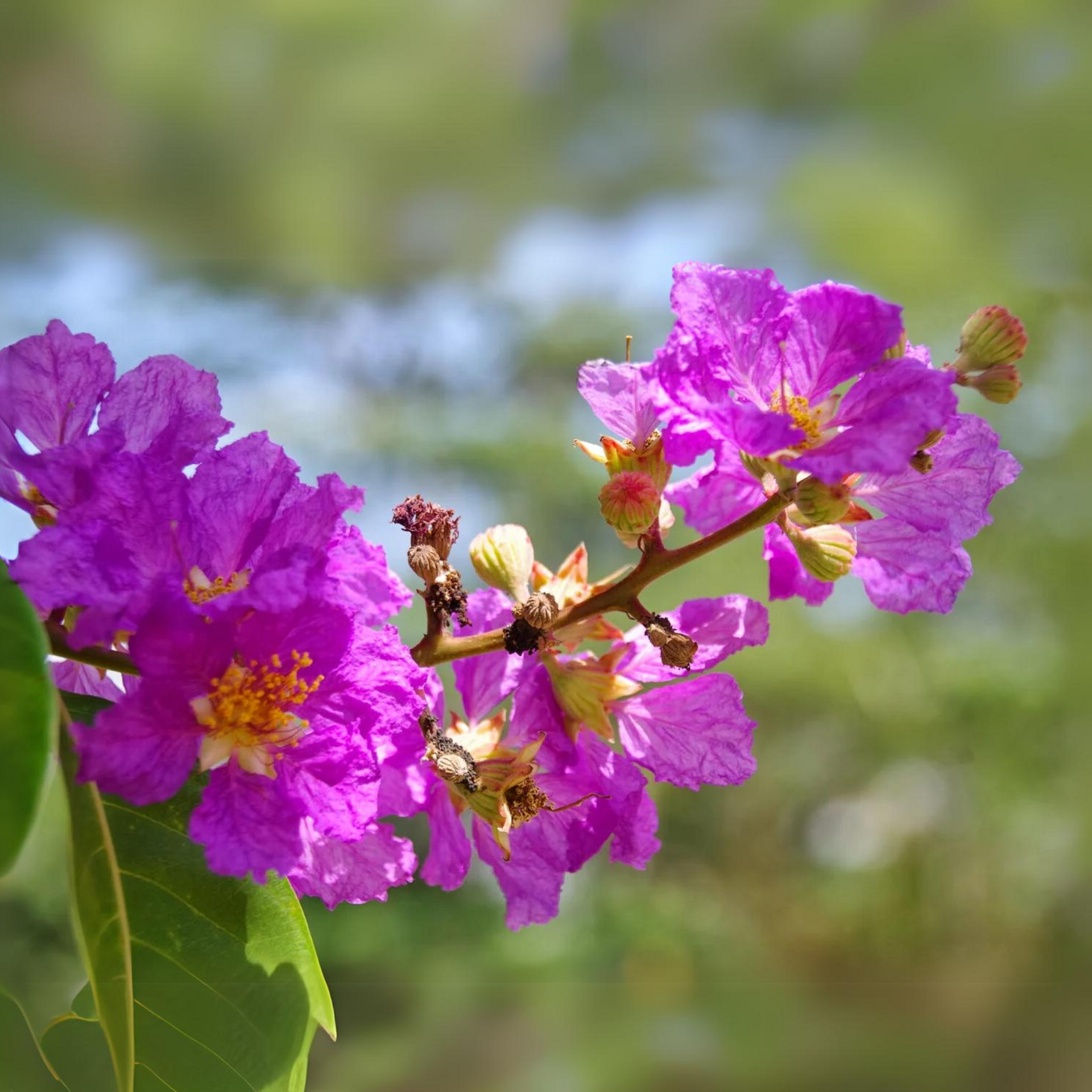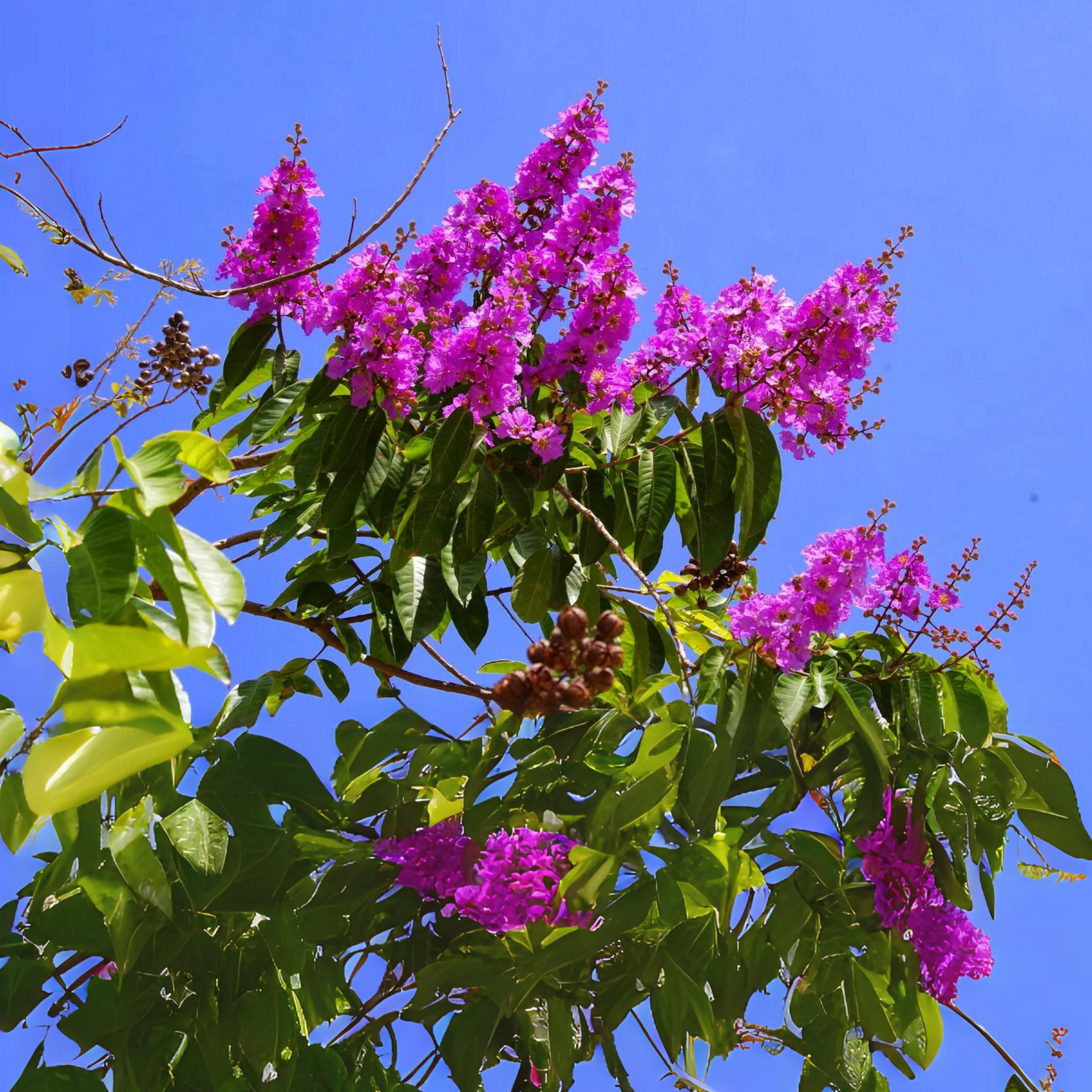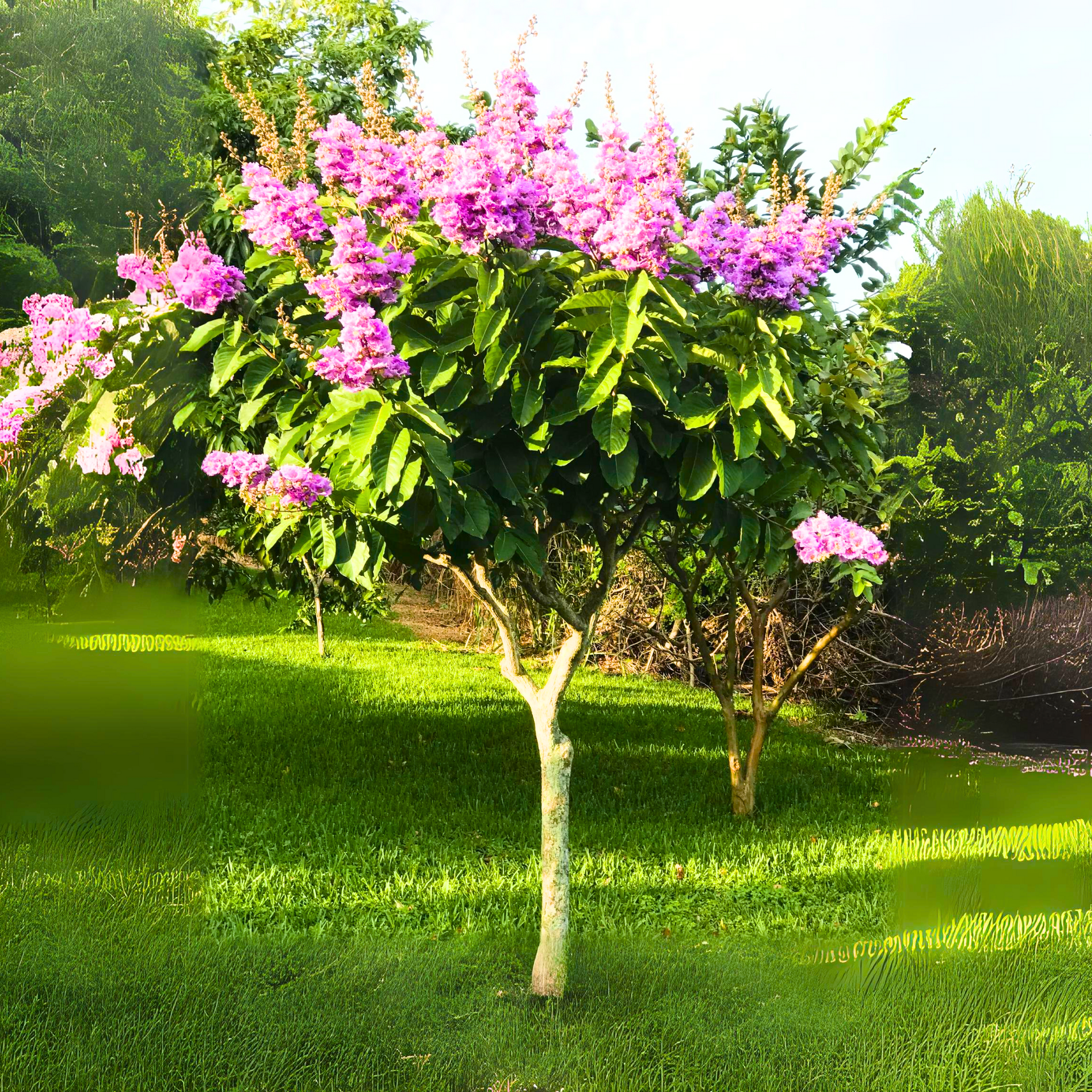


Green Paradise® Legerstomia Pink Lagerstroemia speciosa Queens Crape Myrtle tree Live Sapling Plant
Guaranteed Safe Checkout
The Resplendent Beauty of Pink
Lagerstroemia: Nature's Delight
In the realm of horticulture, few plants can rival the sheer splendor of the Pink Lagerstroemia. With its dazzling blossoms, vibrant foliage, and rich cultural history, this remarkable ornamental shrub has captured the hearts of gardeners and nature enthusiasts worldwide.
The Lagerstroemia
- Lagerstroemia, commonly known as crape myrtle or crepe myrtle, is a genus of flowering plants that includes around 50 species and countless cultivars.
- Among these, the Pink Lagerstroemia stands as a testament to nature's artistic brilliance.
Aesthetic Marvel
- The Pink Lagerstroemia is renowned for its stunning display of vibrant pink blooms.
- These flowers, which can range from soft pastels to deep magentas, appear in large, showy clusters during the summer months.
- The delicate, crinkled petals give the impression of fine crepe paper, lending the plant its common name of "crepe myrtle."
- These blooms not only provide a visual feast but also attract pollinators like bees and butterflies, contributing to the vitality of any garden.
Seasonal Elegance
- One of the Pink Lagerstroemia's most captivating features is its ability to provide year-round interest.
- In spring, new foliage emerges in shades of bronze or red, creating a striking contrast against the mature green leaves.
- As summer arrives, the vibrant pink blossoms take center stage, filling the air with a sweet fragrance.
- When autumn approaches, the foliage undergoes yet another transformation, donning shades of fiery red, orange, and yellow.
- Even in winter, the Lagerstroemia retains its charm, with its attractive peeling bark adding a unique dimension to the winter landscape.
Versatile Garden Addition
- Pink Lagerstroemia is a versatile plant that can thrive in a variety of settings.
- It can be grown as a small tree or a multi-stemmed shrub, making it suitable for both urban gardens and larger landscapes.
- Its moderate size allows it to fit snugly into most garden designs, whether as a focal point or a border plant.
- Additionally, its adaptability to various soil types and resistance to many pests and diseases make it an excellent choice for low-maintenance gardening.
Cultural Significance
- Beyond its aesthetic appeal, the Pink Lagerstroemia holds cultural significance in many regions.
- It is particularly esteemed in the Southern United States, where it is often referred to as the "Southern Lilac."
- In this context, it symbolizes the enduring beauty and resilience of the Southern landscape.
- Moreover, in some Asian cultures, Lagerstroemia is associated with longevity and rebirth, further emphasizing its profound cultural importance.
Caring for Pink Lagerstroemia
- While Pink Lagerstroemia is relatively low-maintenance, it thrives when given some care and attention.
- Plant it in well-drained soil and ensure it receives ample sunlight, ideally at least six hours a day.
- Regular pruning, typically in late winter or early spring, promotes healthy growth and abundant flowering.
- Adequate watering, especially during dry spells, is also essential for its well-being.
How To Grow Pink Lagerstroemia Plant
Lagerstroemia, commonly known as Crape Myrtle or Lagerstroemia, is a popular flowering shrub or small tree that adds a burst of color to gardens and landscapes. With its stunning pink blooms and relatively low maintenance requirements, the Pink Lagerstroemia plant is a favorite among garden enthusiasts. In this article, we'll explore the steps to successfully grow and care for this beautiful plant.
Choosing the Right Location
Selecting the right location is crucial for the health and growth of your Pink Lagerstroemia.
Here are some factors to consider:
Sunlight:
Lagerstroemia plants thrive in full sunlight. Ensure that they receive at least 6-8 hours of direct sunlight per day.
Soil:
Well-draining soil is essential. Lagerstroemia prefers slightly acidic to neutral soil with good drainage. Amending heavy or clayey soils with organic matter can improve drainage.
Space:
These plants need space to grow. Make sure to provide adequate spacing between multiple plants to avoid overcrowding.
Planting Your Pink Lagerstroemia
Once you've chosen the right location, follow these steps for successful planting:
Timing:
The best time to plant Pink Lagerstroemia is in late winter or early spring when the plant is dormant. This allows it to establish its root system before the heat of summer.
Dig a Hole:
Dig a hole twice the width of the root ball, but no deeper. Place the plant in the hole, ensuring it's at the same depth as it was in its nursery container.
Backfill:
Fill the hole with soil, tamping it down gently as you go to remove air pockets.
Watering:
After planting, water your Lagerstroemia thoroughly to help settle the soil and provide moisture to the roots.
Watering and Maintenance
To keep your Pink Lagerstroemia healthy and vibrant, follow these care guidelines:
Watering:
While Lagerstroemia is relatively drought-tolerant once established, it's important to keep the soil consistently moist during the first growing season. Afterward, you can water deeply but less frequently.
Mulching:
Apply a layer of mulch around the base of the plant to help retain moisture, regulate soil temperature, and inhibit weed growth.
Pruning:
Pruning is essential to encourage healthy growth and vibrant blooms. Trim dead or diseased branches in late winter or early spring before new growth begins. You can also shape the plant to your desired form at this time.
Fertilizing:
Lagerstroemia benefits from annual fertilization in early spring using a balanced, slow-release fertilizer. For proper application, follow the packaging instructions.
Dealing with Common Issues
While Pink Lagerstroemia is generally hardy, it can encounter a few common issues:
Powdery Mildew:
This fungal disease can affect Lagerstroemia. To avoid it, maintain enough air circulation and avoid overhead watering.
Aphids:
These tiny insects can sometimes infest Lagerstroemia. Treat them with insecticidal soap or neem oil.
Root Rot:
Root rot can be caused by overwatering or poorly drained soil. Ensure proper drainage and avoid waterlogged conditions.






